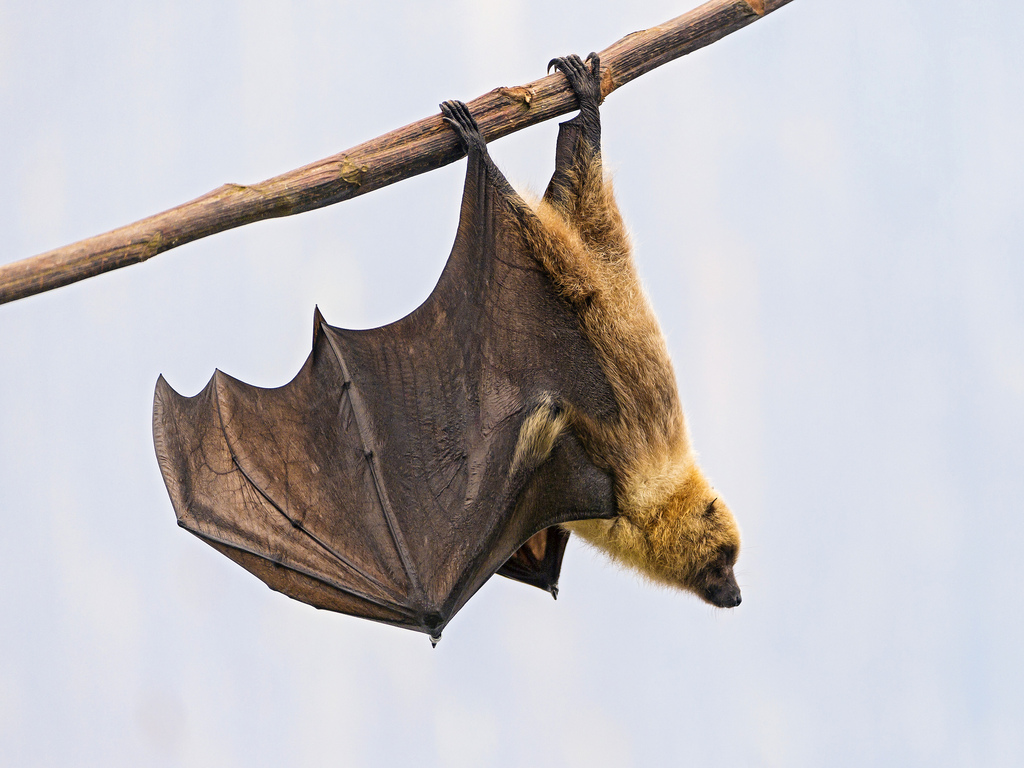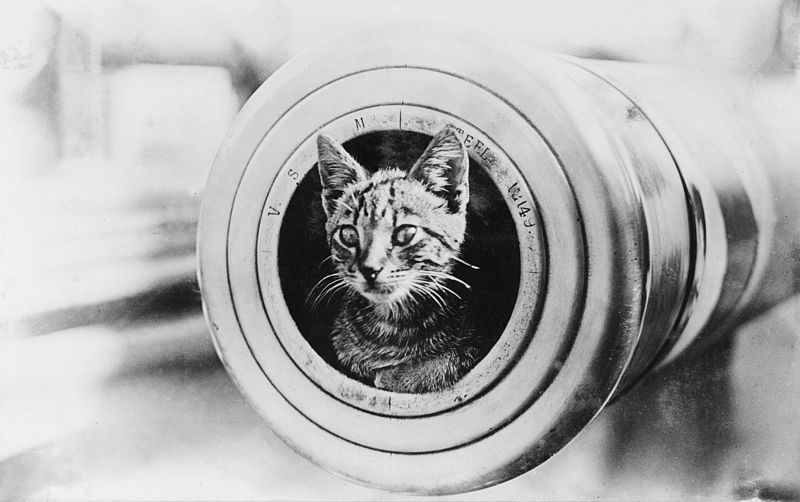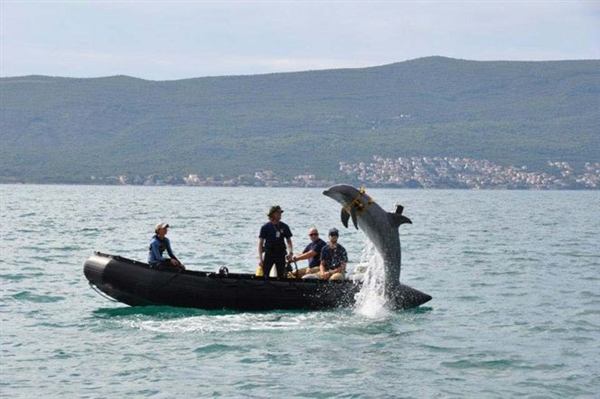We all know that horses were commonly used for military purposes, but they weren’t the only animals used during war. Here are seven more animals historically used in warfare.
Bats

[Fruit Bat — Wikipedia]
The bomb was made up of more than a thousand compartments, each containing a bat. Attached to each bat was a small, timed, incendiary bomb.
At dawn, the bomb would be dropped, deploying a parachute mid-flight. The bats would then be released, scattering to roost in buildings within a radius of 30 to 60 kilometers. Because of the highly flammable building materials commonly used in Japan at the time, bat bombs had the potential to destroy a city, but with a lower civilian casualty count than traditional bombs.

[Bat Bomb — Wikipedia]
Despite the success, the project was not combat ready until 1945 and was eventually abandoned to focus on the development of a weapon with far greater power—the atomic bomb.
Cats

[The feline mascot of the Australian light cruiser HMAS Encounter, peering from the muzzle of a 6 inch gun. — Wikipedia]
Dating as far back as the ancient Egyptians, cats were used on boats to help solve a number of seafaring woes: Cats are excellent predators of rodents, reducing damage, disease, and consumption of food reserves by rodents.
In addition to their natural aptitude for pest control, cats adapt quickly to new surroundings, and are generally comfortable on a ship. They also provided companionship for sailors way from home for long periods of time.
Elephants

[Indian war elephants — Wikipedia]
First used in India, elephant mounted cavalry were used to charge through enemy ranks, causing chaos and striking terror.
The practice spread from India across Southeast Asia and to the Mediterranean. Elephants of war were last used during the Franco-Siamese War of 1893, and work elephants as recently as the First World War.
The use of elephants for warfare ended with the introduction of cannon on the battlefield, which could easily target the creature.
Dolphins

[U.S. Navy teams work with specially trained dolphins during an exercise designed to help the Montenegrin navy detect underwater explosives left over from war. — State Department photo, courtesy of U.S. Embassy Montenegro]
The U.S. Navy trains dolphins and sea lions under the U.S. Navy Marine Mammal Program, based in San Diego, California; some 75 dolphins are in the program.
Dolphins are trained for reconnaissance missions, such as locating enemy mines or swimmers and reporting back to their handler. Due to the secrecy of the program, some have speculated that specially designed weapons were developed and attached to the dolphins however, the U.S. Navy denies having used the mammals to harm humans or watercraft.
Dogs

[Master Corporal Greg Hanniman from 2 Combat Engineer Regiment poses with a dog of the Canine Unit of the Ontario Provincial Police at the demolition range during Exercise STALWART GUARDIAN on August 19, 2016 at 4th Canadian Division Support Base Petawawa, Ontario. — Photo: Sgt Jean-Francois Lauzé, 4th Canadian Division Support Base Petawawa]
Used as scouts, sentries and trackers on military missions, dogs also comfort soldiers as a mascot during active duty, and as a service dog for veterans returning to civilian life.
During the Second World War dogs were used by the Soviet Union as anti-tank weapons. Explosives would be strapped to a dog which had been trained to run under a tank, where the explosives would be triggered, targeting the most vulnerable area.
Dogs are also used, controversially, in dealings with prisoners. For example, the Abu Ghraib prisoner torture and abuse scandal, that caught the attention of human rights organizations across the world.
Pigeons

[Pigeon equipped with a specially designed camera for aerial surveillance – Wikipedia]
As the radio was yet to be invented, pigeons were used for communications between mobile forces and a static headquarters. During the Second World War, the United Kingdom alone used about 250,000 homing pigeons. An enemy pigeon was considered a high-value target because of the intelligence they carried.
Pigeons were also used as an early form of aerial photography, with specially designed timed cameras attached to their body that would be able to provide information regarding enemy positioning.
Rats

[Street rat – Wikipedia]
The Nazis grew wise to the plan when they intercepted the first shipment. Although the plan was never fully executed, due to the resources wasted by Germans in checking all future dead rats it was considered a success.
Advertisement




















